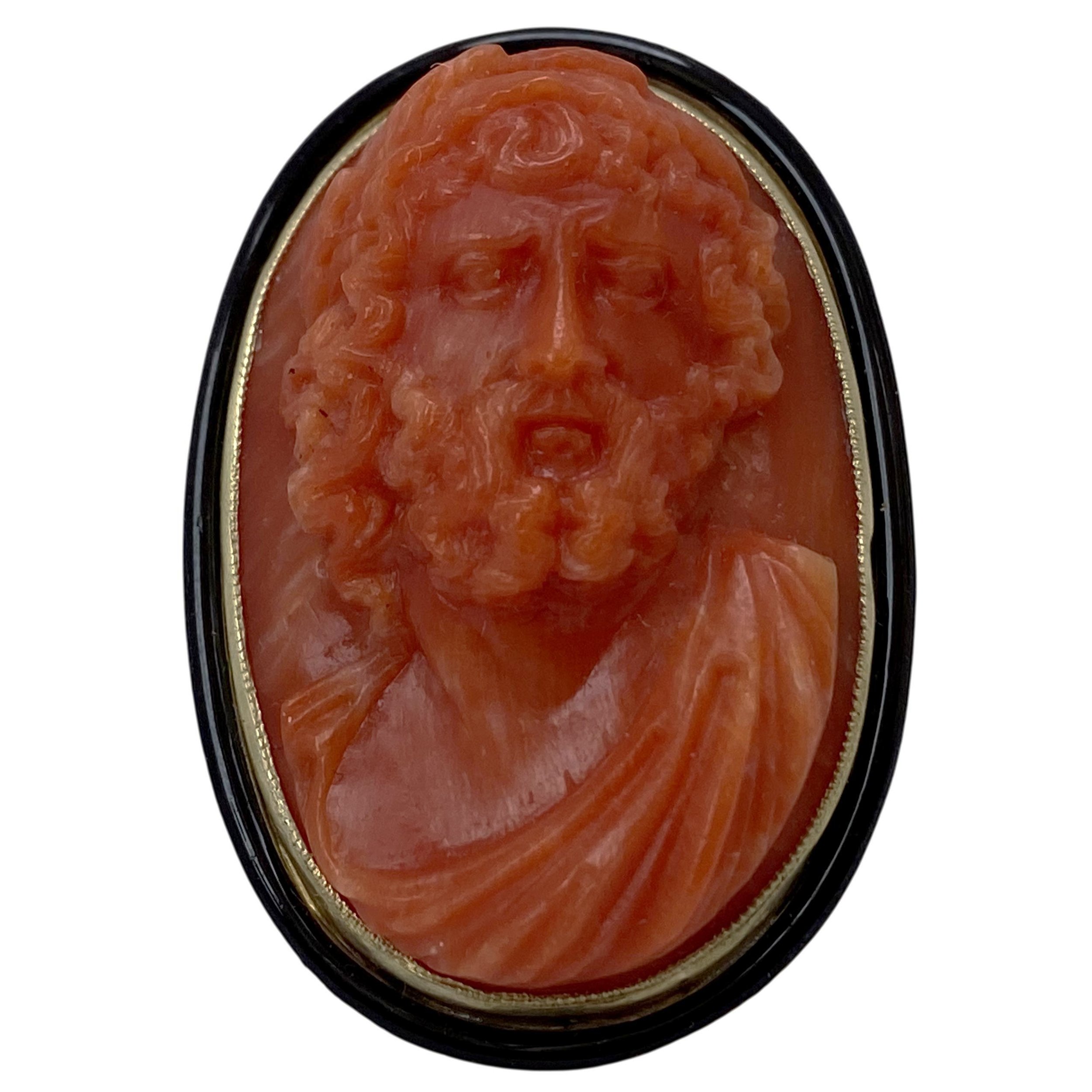 Image 1 of 4
Image 1 of 4

 Image 2 of 4
Image 2 of 4

 Image 3 of 4
Image 3 of 4

 Image 4 of 4
Image 4 of 4





Egyptian revival micromosaic
Egyptian revival 18ct gold “bulla” style pendant/brooch decorated with granulation, applied wire and rope twist borders, set to the centre with a micro-mosaic depicting the head of a pharaoh within grapes and vines decorated border on red micro mosaics. On the back a rare removable type of attachment to transform it from and into a pendant.
In the style of Castellani manufactured by the goldsmith Cesare Tombini (active 1857-1870) bearing his hallmark and the gold title for the city of Rome.
Dimensions cm 5.6 x 3.8 including bail - cm 3.8 diameter.
Excellent condition commensurate with age and use. Small restoration back lower center.
Egyptian revival 18ct gold “bulla” style pendant/brooch decorated with granulation, applied wire and rope twist borders, set to the centre with a micro-mosaic depicting the head of a pharaoh within grapes and vines decorated border on red micro mosaics. On the back a rare removable type of attachment to transform it from and into a pendant.
In the style of Castellani manufactured by the goldsmith Cesare Tombini (active 1857-1870) bearing his hallmark and the gold title for the city of Rome.
Dimensions cm 5.6 x 3.8 including bail - cm 3.8 diameter.
Excellent condition commensurate with age and use. Small restoration back lower center.
Egyptian revival 18ct gold “bulla” style pendant/brooch decorated with granulation, applied wire and rope twist borders, set to the centre with a micro-mosaic depicting the head of a pharaoh within grapes and vines decorated border on red micro mosaics. On the back a rare removable type of attachment to transform it from and into a pendant.
In the style of Castellani manufactured by the goldsmith Cesare Tombini (active 1857-1870) bearing his hallmark and the gold title for the city of Rome.
Dimensions cm 5.6 x 3.8 including bail - cm 3.8 diameter.
Excellent condition commensurate with age and use. Small restoration back lower center.
Tombini were known for their jewellery in the 'archaeological style'; pieces by the firm could be purchased at the shop in Rome, as well as through their retailer in London's Wigmore Street. Such revivalist style jewellery was popularised by Napoleon III's wife, who wore items from the Campana collection, which included many pieces of ancient jewellery. The most influential jeweller at this time was Fortunato Pio Castellani and his sons Alessandro and Augusto, who endeavoured to re-create historically precise models of recently excavated finds. They displayed their work at International Exhibitions and had shops in London and Paris. The style gained momentum with Carlo Giuliano & John Brogden in London, Henri Vever & Eugene Fonteney in Paris and Josef Bacher & Sohn in Vienna. No traveller's trip to Rome would be complete without a visit to a jeweller working in this new 'Classical' style. George Eliot and George Henry Lewes, when visiting the city, chose Tombini to mount a cameo of a Bacchante they had acquired. In his diary for 18 April 1860 Lewes wrote: "The Bacchante we took to a goldsmith and there chose an Etruscan mounting" (see Yale University Library GEN MSS 818 for the cameo in its Tombini gold mount). A Handbook of Rome and its Environs (John Murray, London, 1871) notes that Cesare Tombini was 'a good working jeweller at 65, via Babuino who can be relied upon for setting cameos, mosaics, etc'. There was an increasing interest in the Egyptian style through the 1860s, helped by Auguste Mariette's excavations for the Louvre and the digging of the Suez Canal. Verdi's Aida (1871) was based on a plot by Mariette, following the Khedive's request for an opera story. This demi-parure, with its strong pharaonic motifs, reflects the time's passion for objects in the Egyptian taste, displaying a freer adaptation of the 'archaeological style' than early Castellani examples.





